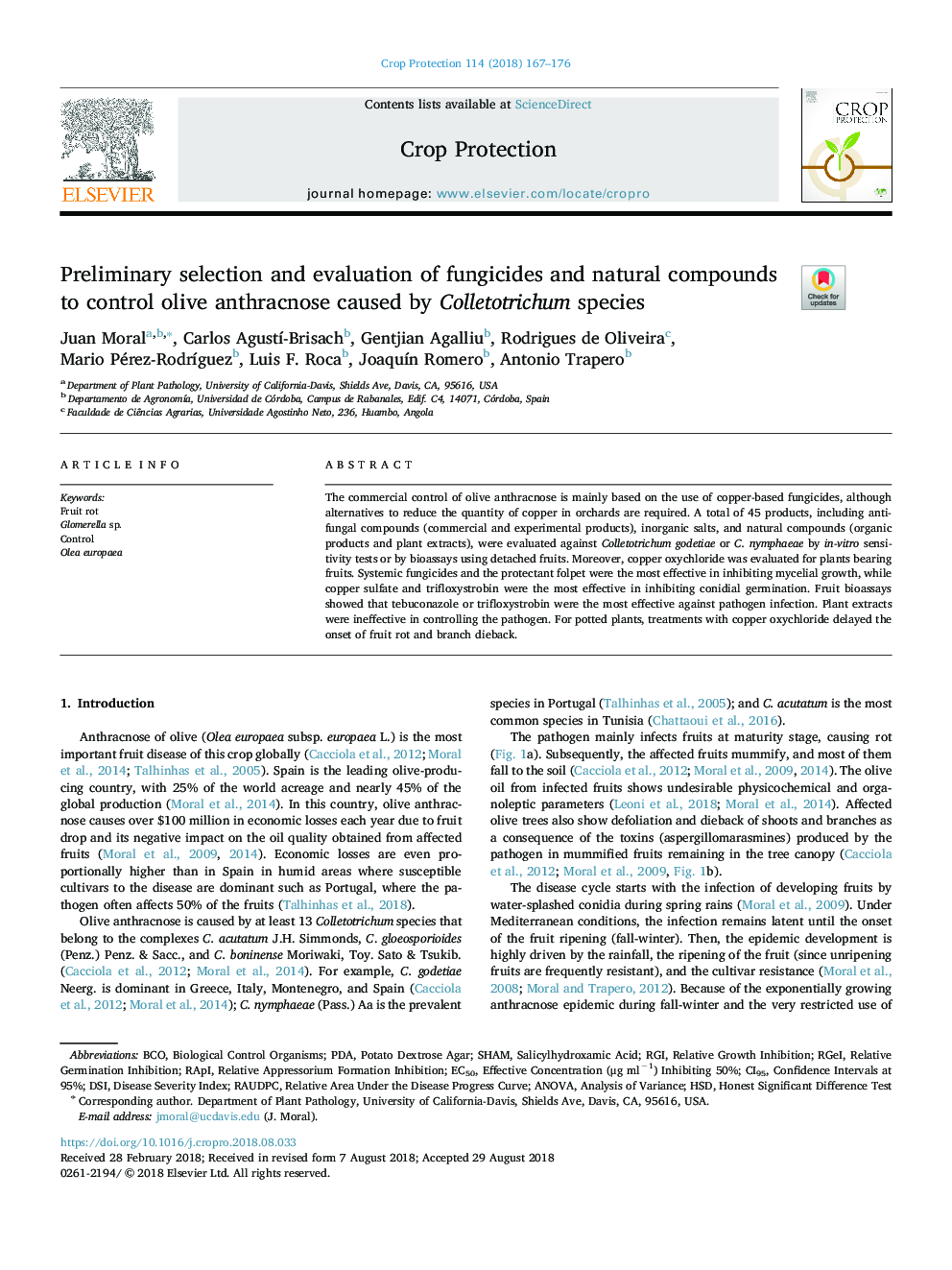| Article ID | Journal | Published Year | Pages | File Type |
|---|---|---|---|---|
| 10116582 | Crop Protection | 2018 | 10 Pages |
Abstract
The commercial control of olive anthracnose is mainly based on the use of copper-based fungicides, although alternatives to reduce the quantity of copper in orchards are required. A total of 45 products, including antifungal compounds (commercial and experimental products), inorganic salts, and natural compounds (organic products and plant extracts), were evaluated against Colletotrichum godetiae or C. nymphaeae by in-vitro sensitivity tests or by bioassays using detached fruits. Moreover, copper oxychloride was evaluated for plants bearing fruits. Systemic fungicides and the protectant folpet were the most effective in inhibiting mycelial growth, while copper sulfate and trifloxystrobin were the most effective in inhibiting conidial germination. Fruit bioassays showed that tebuconazole or trifloxystrobin were the most effective against pathogen infection. Plant extracts were ineffective in controlling the pathogen. For potted plants, treatments with copper oxychloride delayed the onset of fruit rot and branch dieback.
Keywords
Related Topics
Life Sciences
Agricultural and Biological Sciences
Agronomy and Crop Science
Authors
Juan Moral, Carlos AgustÃ-Brisach, Gentjian Agalliu, Rodrigues de Oliveira, Mario Pérez-RodrÃguez, Luis F. Roca, JoaquÃn Romero, Antonio Trapero,
